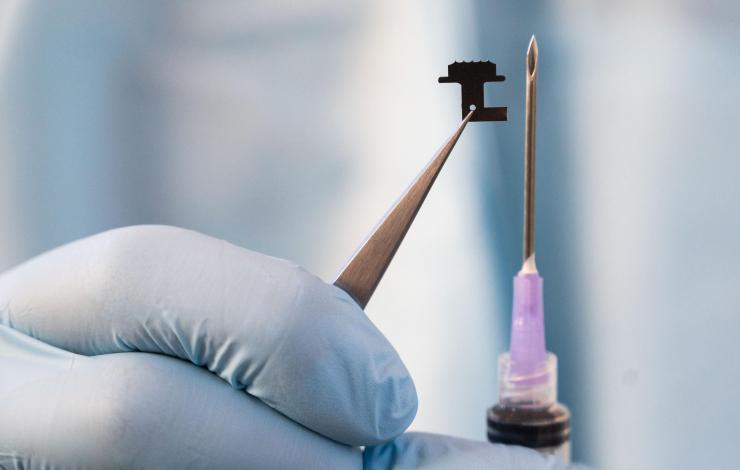Georgia Tech researchers have developed a method to sample ISF from human skin in a simple, minimally invasive manner. This method utilizes an array of microneedles to create micropores on the skin through which ISF is collected, in some cases using suction. ISF samples collected from human participants identified valuable and, sometimes, unique biomarkers compared to plasma samples. ISF monitoring studies showed that the pharmacokinetics of a model biomarker, caffeine, was similar in ISF and plasma, indicating that this method can capture dynamic information. This method can be done within minutes for point-of-care measurements in the clinic as well as at home.
- Novel biomarkers – access biomarkers found only in ISF
- Continuous monitoring – lack of clotting allows continuous ISF collection
- Minimally invasive – no hypodermic needles or large instrumentation needed
- Simple – microneedles allow for simple, point-of-care collection of ISF
- Quick – collection can be done within minutes in clinic or at home
- Clean – no need to remove red blood cells before analysis
- Novel biomarker discovery and validation
- Monitoring concentrations of drugs and biomarkers for drug development
- Continuous monitoring of biomarkers
- Therapeutic drug monitoring
Tissue interstitial fluid (ISF), the fluid in spaces between the tissue cells, is a novel source of biomarkers that compliments conventional fluid sources like blood and urine. The use of ISF for therapeutic drug monitoring, dermatological diagnoses and continuous biomarker measurements without blood contact provides unique information, avoids blood clotting problems and, is potentially pain-free. Despite the advantages, ISF has received limited attention due to the lack of simple collection methods. Thus, there is a need for a simple ISF collection method.

Size comparison of a microneedle patch used to extract interstitial fluid versus a hypodermic needle used to obtain blood samples. (Credit: Allison Carter, Georgia Tech)
